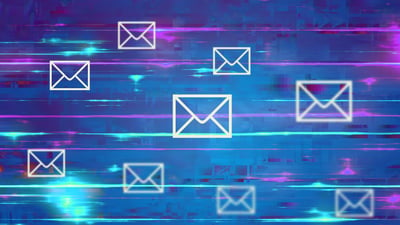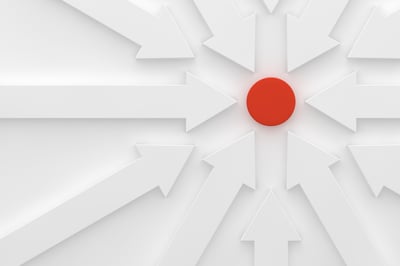

Customer journeys are becoming complex, and it's no surprise.
Today's consumers have access to plenty of content on every (digital) corner, not to mention retargeting ads and cold sale campaigns. However, the need to understand how a customer buys remains unchanged. Businesses need an accurate view of what customers do along their buying journey to sell better.
Customer journey mapping informs businesses how customers interact with them at different touchpoints and helps identify gaps in the go-to-market. With a customer journey map, it's easy to streamline your sales and marketing efforts, shorten the sales cycle, and grow your pipeline.
In this article, you’ll learn why customer journey mapping is essential and how to create and use a customer journey map.
Customer journey mapping is the process of piecing together and visualizing how customers interact with your brand as they move toward a purchase.
Many companies use customer journey mapping to understand what customers need to buy a product or use a service, which touchpoints are most important, and why. This, in turn, helps track customer experience, forecast and plan revenue, and measure the effectiveness of go-to-market efforts.
The customer journey defines a buyer's path from finding what they need to make a purchase (and beyond). It encompasses all touchpoints and activities the buyer has with a company – ad clicks, content views, sales meets, and so on.
The lingering assumption is that customer journeys follow a straightforward and linear trajectory: customers identify their needs, learn about products that meet them, and purchase from their preferred choices.
In reality, however, customer journeys are much more complex. Potential buyers may hop in and out of the buying cycle and change their minds multiple times before they reach the buying stage. On top of this, the typical buyer uses multiple devices and navigates multiple channels – ads, google search, videos, social media, and review sites – when going through the process.
With all these twists and turns, buying journeys are like intertwined (cooked) spaghetti than a straight line.
Some customer journeys are inherently more complex than others. A B2B customer journey, in particular, presents companies with additional challenges.
Unlike B2C, where a buyer is typically a single person, and the journey can be measured in days or weeks, the B2B customer journey involves multiple people and is measured in months or even years.
The B2B customer journey usually involves several company members coordinating and agreeing before purchasing a product. Due to these lengthy multi-stakeholder purchases, the typical B2B customer journey involves many more touchpoints.
The average B2B customer journey involves 31 touches across 3.1 channels over 192 days.
Everyone's first instinct is "seeing is believing". This applies equally to go-to-market organizations. The visual evidence that customer journey maps provide is par excellence.
From leadership to marketing, sales, and product, visualizing how customers move through the entire sales cycle provides easy-to-understand insights into your customers' buying behavior. Data visualization allows you to better comprehend what drives sales, optimize the different stages of the buying experience, and replicate those successes in the future.
Customer journey mapping makes it easier to route other potential leads in the pipeline and helps you stand out from the crowd. It aligns your team and shows you what works and doesn't, enabling you to work toward the same goals.
Given the complexity of a B2B customer journey, how do you create a customer journey map? The short answer is with data. A lot of data.
Why? Because creating an accurate map requires detailed information about customer behavior and preferences throughout their journey. You then, of course, need to process and visualize the data. Three main elements help build a data-driven map: tracking the customer journey data, transforming the data, and visualizing the data on a customer journey map.
Let’s unpack these in more detail.
The first step is to get a handle on your data. Collect and store as much relevant data as possible about your customers' activities, from a customer's first interaction with your business (whether they click on an ad or read a blog post) to the closure of the account.
Before venturing into the technicalities of collecting and storing the data, understand where and how your customers interact with your brand. Consider the following touchpoints:
Track as much activity (both online and offline) as possible. Store and track every email, call, and interaction on your website in your data warehouse. One of the simplest things sales reps and other customer-facing staff can do is collect qualitative data about the customer journey.
Check in with the customer and ask them where they first heard about you and what they liked and disliked about your sales process. Gathering insights into how customers think and feel at different buying journeys is vital data you don't want to miss. Customer success and support are key players in collecting such data, as they're often the most likely to interact with customers.
Don't forget to collect quantitative data as well. Add tracking and identification javascript to your website to track user and event data. For example, tracking user sessions on your website throughout the customer journey and identifying those users (such as those who signed up for a newsletter or demo) can help link your users to company accounts.
At the same time, consolidate data from all the other tools in your B2B go-to-market tech stack: CRM, marketing automation tool, customer success tool, advertising platforms, and so on. Track wherever customers interact with your brand as they go through to purchase.
After collecting relevant customer journey data, make sure the data is clean and usable. Input from your data team is inevitable at this stage, especially when, like most B2Bs, your data is spread across a dozen tools with their respective data silos.
You can also use cloud-based data warehouses or databases to consolidate customer data. Once you've connected all the different users and accounts interacting with your business into a unified journey, you're ready to create a customer journey map.
This brings us to the final phase.
At the end of your customer journey mapping, you should have a visual blueprint of the customer journey, including all stakeholders and touchpoints involved.
With that, you can start telling a story about what events were necessary for your customer on their journey down the sales cycle. By visualizing data, you’ll better understand what was important to grow sales at different pipeline stages.
A visual overview of your customer journey sets your path toward a data-driven and digital organization and optimizes the route for other potential customers.
There's no hiding the initial investment of time (and resources) in a data-driven customer journey map. But there are ways to reduce the overhead.
Two ways to combine your B2B go-to-market data are to set up the process in-house or purchase an off-the-shelf customer journey mapping solution. By definition, the second is less resource intensive. And with dozens of providers, there are price deals to meet most price points.
Customer journey mapping's benefits as part of your go-to-market far outweigh the challenge of establishing a data-driven setup, so it's worth giving a try.
With your data collection, processing, and visualization methods in place, you’re ready to use the customer journey map.
The first and critical benefit of customer journey mapping is building and refining your ideal customer profile (ICP) and buyer personas.
The ICP is the type of customer (company) who would benefit the most from your product or service. To build your ICP, you need accurate, high-quality customer data, including attributes like company size, industry, and budget. B2B attribution helps when you need to understand what these customers have in common.
ICP helps you determine if you're selling to the customers you want to sell to. That way, you can focus on targeting the customers best suited for your product.
A buyer persona is a research-based description of an individual within your ICP who wants to buy your solution. This isn't necessarily someone who will use your product. In the B2B world, you will likely speak to stakeholders who purchase but don't use the product and others who purchase and use it.
The buyer persona represents your average customer, which usually includes their role and seniority. You’ll also want information about what motivates them, their goals, and what drives them to buy.
To create these personas, you can gather information about your buyers through surveys, interviews, user testing, and customer support emails.
With data-driven customer journey mapping, the benefits are endless.
You can better understand your average customer and the route they take along the customer journey stages, so you can make more informed decisions about where to focus your efforts.
In each phase of the customer journey, customers interact with different touchpoints. These can be campaigns, stakeholders, or content. Each stage and touchpoint can be analyzed when driving conversions and generating revenue, identifying areas for improvement, and activities not performing as expected.
By ensuring every part of the customer journey works optimally, you drive business growth and revenue.
A customer journey map gives sales reps a head start in the sales process and prepares them for success. It shows customers' emotions at each stage before they finally get to the buying stage.
Knowing which leads are more valuable than others gives you a better chance at a sale. The customer journey map identifies the leads most likely to convert, allowing you to focus your valuable resources on those leads.
There are many stumbling blocks in the customer journey. One of the prime examples is a customer who takes a long break during the sales process. With a customer journey map, the sales team can easily track the communication gaps and reach out to learn more about what's keeping the customer from moving further.
The B2B sales cycle is long, and it can take time to see what activities generate revenue over the long term. A customer journey map can alleviate some of the unpredictability and anxiety associated with a B2B customer journey by showing how certain aspects are likely to impact the business and accurately predicting value.
With a customer journey map, marketers can easily identify key moments in a customer journey and create more targeted and effective campaigns. This helps engage customers and deliver the right message at the right time. Here are some marketing niches to use a customer journey map.
A customer journey map shows marketers the customer actions at each touchpoint and helps predict behavior and preferences. Marketers can use this data to adjust and optimize their content strategy, making it more relevant and tailored to customer needs.
Another potential use case of customer journey mapping is to target a prospect across multiple touchpoints. For example, a social media post could be redirected to a blog post, which is then redirected to a demo request. This way, you reach customers wherever they are and help them take specific actions.
With a customer journey map, you can easily create buyer personas, target the right people, get them to contact you, and build your marketing-qualified leads (MQLs) to grow them into sales-qualified leads (SQLs). You can make the process seamless by tweaking your site's layout and creating a solid call-to-action on your ads and blog pages.
As a marketer, you can track which channels generate the highest number (and best quality) of leads and focus on those higher-performing channels.
Content helps move accounts down the pipeline. It needs to be relevant to your audience, wherever they are in the funnel. You can better understand your target audience's needs, pain points, and preferences by mapping the different customer journey stages and touchpoints. You can then create content that addresses specific customer needs at each stage of the journey.
For example, in the awareness phase, content may focus on educating the customer about the product or service. In the evaluation phase, the focus might shift to removing objections and highlighting the product's or service's benefits.
Use a customer journey map to target people on social media based on attributes like job, company size, and location. Let's say you're targeting a specific country with a large market for your product and want to scale.
With a customer journey map, it's easy to focus your social media marketing efforts on that specific country. This can include using the social channels that are more popular with your audience in the country, posting in the languages they speak, being mindful of their cultural values, and so on.
A customer reaches the product onboarding phase toward the end of their journey. The product team can use a customer journey map to create a product that solves customers' problems, help them achieve their goals, and meet their expectations.
The map can highlight a problem with your website or customer service. The customer journey map is like a living being that will evolve as markets and economies change. Marketing brings new and exciting ideas and campaigns that transform how customers interact with you.
While it's almost impossible to record every action the customer takes on their journey with you, data-backed information will get you as close to the truth as possible to gain customer trust, make better decisions, and increase your sales.
Customer journey mapping helps you understand customer experiences and interactions, from initial awareness to post-purchase. Below are some benefits of customer journey mapping.
Customer journey mapping is a powerful tool for understanding and improving the customer experience. With a customer journey map, businesses can track key touchpoints and gain valuable insights into customers' needs, pain points, and areas for improvement.
These insights go a long way in optimizing the customer journey and driving growth. Whether you're just starting with customer journey mapping or looking to take your efforts to the next level, it's a strategy worth investing in.
With the right approach and tools, you can unlock the full potential of your customer journey and deliver a truly customer-centric experience.
Learn how to leverage data to deliver the best user experience in your industry by tapping into the power of customer journey analytics.

Create a dynamic visual map of your customer's touchpoints and elevate their experience. Discover the right customer journey mapping software to get started.
Jeremy Sacramento is a Content Manager at Dreamdata. Jeremy enjoys sharing insights into all things marketing, attribution, and analytics, as well as wider trends within the B2B space.

Create a dynamic visual map of your customer's touchpoints and elevate their experience. Discover the right customer journey mapping software to get started.
Customer reviews should be monumentally important to you for one reason: they’re important to...
 by Mike O'Brien
by Mike O'Brien
Facebook retargeting isn't exactly new to the paid social advertising world.
 by Sean Thomas Martin
by Sean Thomas Martin
If you’re like most SaaS companies, there are probably 20+ companies in your category that are
 by Yasmine de Aranda
by Yasmine de Aranda
Customer reviews should be monumentally important to you for one reason: they’re important to...
 by Mike O'Brien
by Mike O'Brien
Facebook retargeting isn't exactly new to the paid social advertising world.
 by Sean Thomas Martin
by Sean Thomas Martin
Never miss a post.
Subscribe to keep your fingers on the tech pulse.



